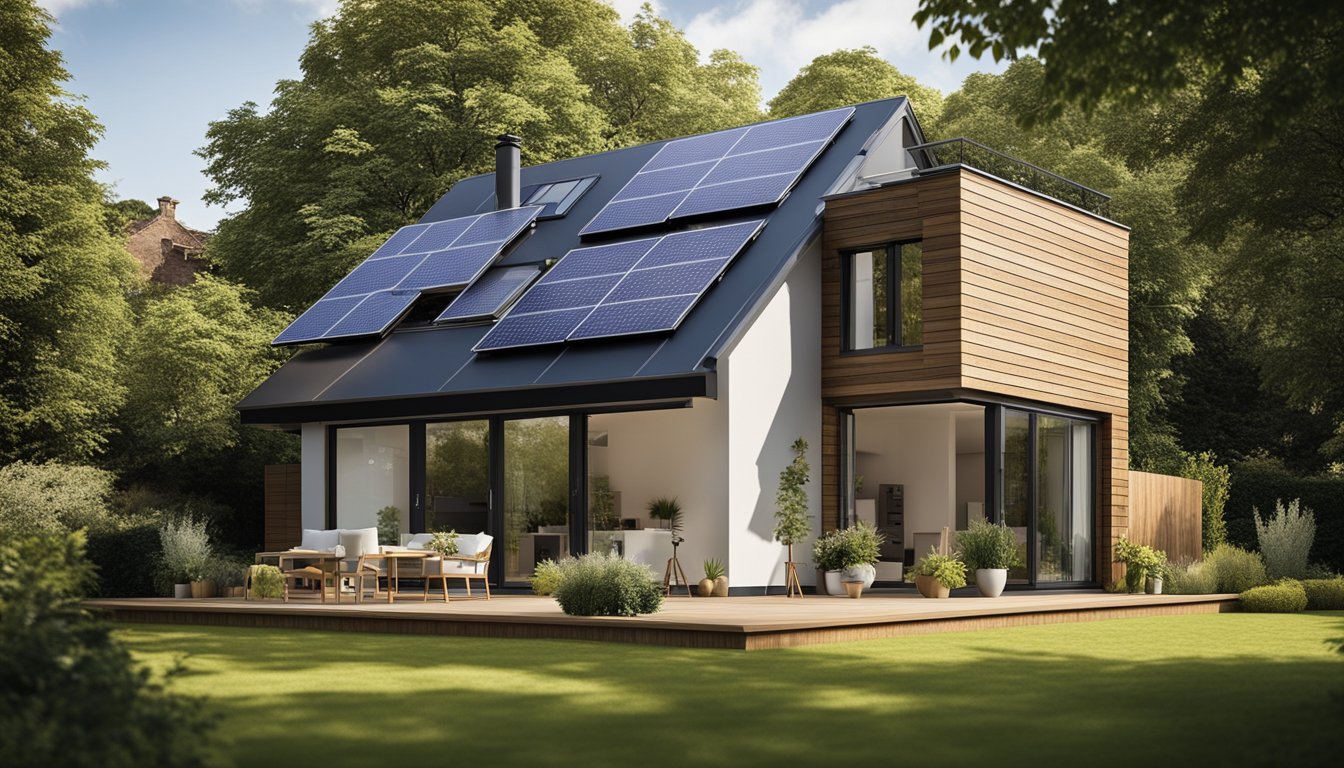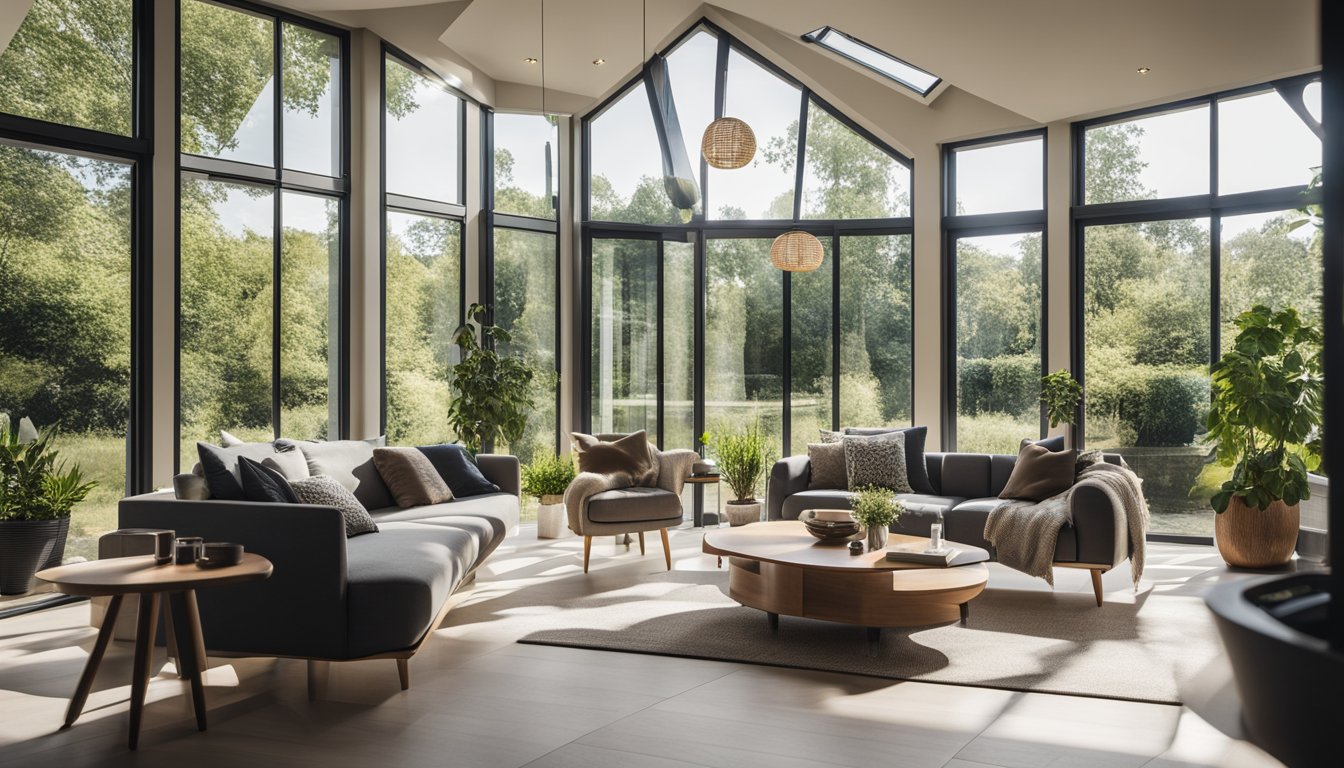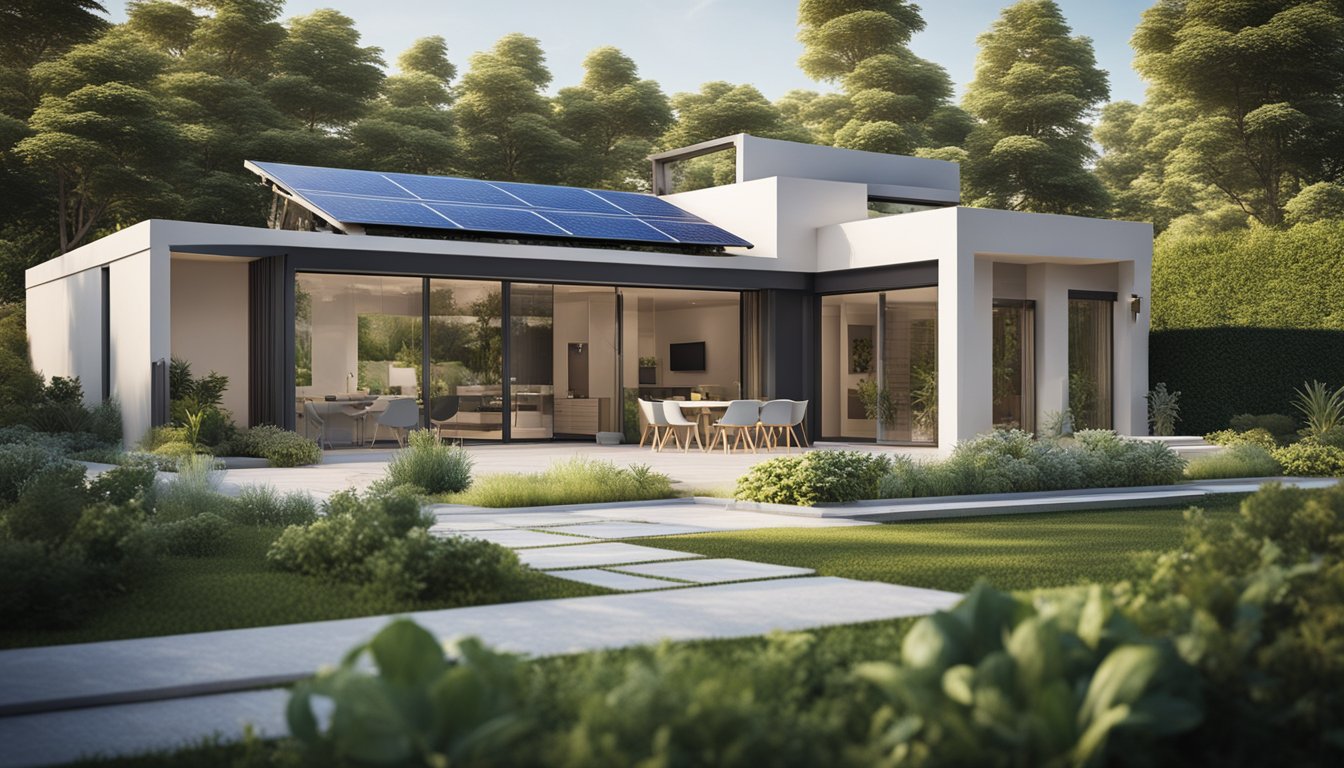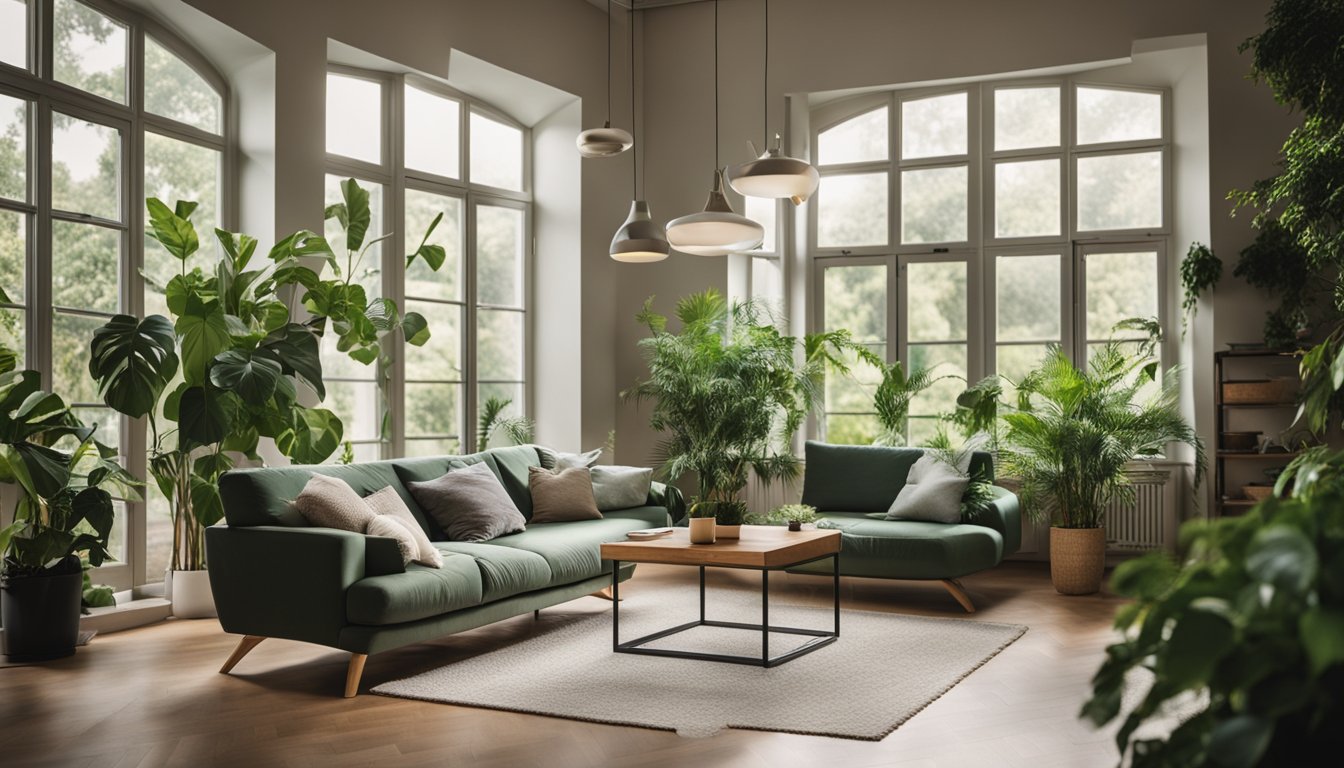Late updated: 11 Apr 2025 13:04
Written by: Eleanor Hartman
Sustainable Home Cooling Solutions For UK Summers: Eco-Friendly Tips for Comfort
As the temperatures rise during UK summers, finding sustainable ways to keep our homes cool becomes crucial. The growing awareness of climate change and the need for energy efficiency has paved the way for innovative solutions. Utilising natural ventilation, energy-efficient appliances, and modern cooling technologies can significantly reduce our carbon footprint while keeping our spaces comfortable.

We can enhance our home’s cooling potential through thoughtful design and smart technology. Planting trees or installing green walls offers natural shade that limits indoor heat, while solar-powered air conditioning units represent a leap toward renewable solutions. Incorporating these elements not only improves indoor comfort but also aligns with our sustainability goals.
Coupled with these strategies, ensuring proper insulation and using materials that reflect sunlight can further optimise energy efficiency. Engaging with these simple yet effective methods ensures that our efforts contribute not just to immediate comfort but also to long-term ecological sensitivity.
Key Takeaways
- Emphasise natural ventilation to improve cooling.
- Integrate renewable technologies for sustainability.
- Prioritise energy efficiency amid climate change.
Maximising Natural Ventilation and Passive Cooling

Sustainable home cooling is crucial in managing the increasing temperatures during UK summers. Maximising natural ventilation and implementing passive cooling strategies can minimise energy consumption and reduce cooling demand while maintaining indoor thermal comfort.
Understanding Thermal Comfort
Thermal comfort is how we perceive and experience indoor temperatures. It's influenced by air temperature, humidity, and airflow. In our quest for comfort, it's essential to avoid overheating and excessive solar gain, especially during heatwaves. We can optimise thermal comfort through natural ventilation, which allows cooler outdoor air to replace warmer indoor air. This reduces reliance on artificial cooling systems and contributes to lower energy consumption. Incorporating passive cooling is another effective method, utilising architectural designs that naturally regulate temperatures, such as strategically placed windows and vents. By maintaining a comfortable indoor environment through these sustainable approaches, we can achieve greater energy savings.
Design-Based Solutions
Architectural design plays a pivotal role in enhancing passive cooling. External shading, like awnings or overhangs, effectively reduces solar gains by blocking direct sunlight. Trees and green walls provide additional shade, cutting down on solar heat. Natural ventilation systems, such as cross-ventilation and stack ventilation, encourage airflow across spaces, reducing overheating and cooling the interior naturally. Thick walls with high thermal mass can also absorb and release heat slowly, maintaining a stable indoor climate. We must consider urban heat island effects when designing solutions, as densely built areas may exacerbate heat retention. Hence, incorporating these design elements is essential for creating energy-efficient and comfortable homes that align with sustainable home cooling principles.
Behavioural Strategies
Our actions significantly impact the efficiency of passive cooling and natural ventilation. Simple behavioural strategies can improve thermal comfort and reduce energy consumption during peak demand. For example, opening windows during cooler parts of the day enhances airflow and minimises heat gains. Additionally, closing curtains or blinds during the hottest parts of the day helps to prevent solar gain. Encouraging the use of fans over air conditioning can significantly lower electricity use. Small adjustments, such as these, foster a culture of sustainability and energy savings in our homes. Raising awareness about these strategies can empower us to take practical steps in achieving a cooler, more comfortable, and eco-friendly living space.
Modern Cooling Technologies and Renewable Solutions

As global warming intensifies, the demand for effective yet sustainable home cooling solutions grows. Modern technologies like energy-efficient air conditioning, heat pumps, and smart cooling devices offer viable alternatives.
Energy-Efficiency in Air Conditioning
We’ve seen considerable advancements in air conditioning systems, significantly improving their energy efficiency. Modern air conditioners often use inverter technology, which allows compressors to operate at variable speeds, optimising energy consumption. These units reduce electricity usage and, by extension, carbon emissions.
The International Energy Agency (IEA) has emphasised the importance of efficiency improvements. By adopting energy-efficient models, homeowners can achieve substantial energy savings. Using renewable energy sources to power these systems can further increase sustainability, reducing our carbon footprint while meeting rising cooling needs.
Heat Pumps and Renewable Alternatives
Heat pumps present a compelling sustainable solution. Air source heat pumps, for instance, transfer heat from outside to inside, cooling homes efficiently. Their dual capability for heating and cooling makes them ideal for the UK's fluctuating climate conditions. Since they move heat rather than generate it, they consume significantly less electricity.
Integrating renewable energy sources, such as solar panels, with heat pumps enhances their sustainability. By utilising these alternative energy sources, we reduce dependence on fossil fuels, aligning with efforts to minimise emissions.
Smart and Portable Cooling Devices
Smart cooling devices offer convenience and efficiency. Portable air conditioners and electric fans with features like speed settings, timers, and remote controls allow for tailored climate control in different rooms. For smaller spaces, devices like the desk fan or tower fan provide targeted cooling with minimal energy consumption.
These devices often feature smart home integration, enabling users to control them via apps or voice commands, optimising energy use. With these technologies, we can stay comfortable while remaining conscientious of energy consumption and environmental impact.
Implementing these modern technologies and integrating renewable solutions allows us to enjoy effective cooling while contributing to a more sustainable future.
Frequently Asked Questions

Sustainable cooling options are becoming increasingly important for UK homeowners who wish to keep their homes comfortable during the warmer months. We explore practical and eco-friendly solutions, including cost-effective installations, innovative cooling technologies, and methods to reduce heat gain without compromising environmental values.
How can one effectively cool their home during UK summers in an eco-friendly manner?
Natural ventilation remains a straightforward approach. Opening windows strategically to create a cross-breeze can cool indoor spaces efficiently. Thermal mass in buildings, such as thick stone or brick, helps maintain lower temperatures. Smart usage of fans and shading devices, such as awnings and blinds, can also significantly reduce heat without high energy consumption.
What are the costs associated with installing sustainable cooling systems in UK homes?
Costs can vary widely based on the type of cooling system. Passive cooling measures like improved insulation and shade structures are generally more affordable initially. For systems like green roofing or advanced air conditioning alternatives, the initial outlay can be higher. However, these may lead to reduced energy bills in the long run, offering savings over time.
What are the best eco-conscious air conditioning alternatives for UK residences?
Evaporative coolers and geothermal heat pumps stand out as effective alternatives. Evaporative coolers, which use water to absorb heat, are energy-efficient in the UK’s relatively mild climate. Geothermal systems, despite higher installation costs, harness the earth's stable underground temperatures to provide reliable cooling with minimal environmental impact.
What strategies can be employed to minimise heat gain in UK houses during the summer months?
Effective methods include installing reflective window films to reduce solar gain. Landscaping techniques, such as planting trees or installing green roofing, can create natural shade and cooling. Enhancing ventilation through louvres or vents helps expel hot air. Ensuring adequate insulation can prevent heat from entering living spaces, maintaining a steady indoor climate.
Which cooling technologies offer the highest sustainability for homes in the UK?
Emerging technologies like phase change materials, which absorb and release thermal energy, are promising. Solar cooling systems, leveraging photovoltaic panels to power cooling devices, are another sustainable option. Smart home automation systems control cooling based on current weather conditions and occupancy, optimising energy usage efficiently.
How can UK homeowners maintain comfortable indoor temperatures in summer without compromising on environmental values?
Using ceiling fans to circulate air can enhance the cooling effect of open windows or evaporative coolers. Utilising renewable energy sources to power these devices greatly reduces carbon footprints. Implementing passive cooling strategies, combined with active monitoring of indoor temperatures, ensures comfort whilst prioritising sustainability.